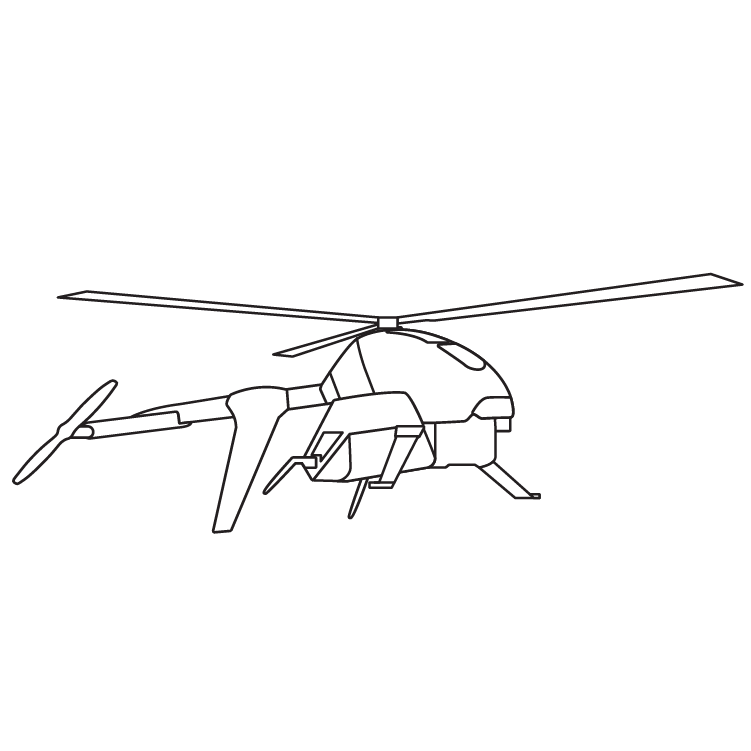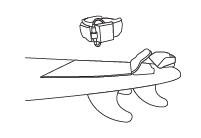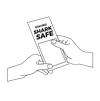Sea Shepherd Australia
Shark Defence Campaign

Since 1937 in New South Wales (NSW) and 1962 in Queensland (QLD), stationary mesh gillnets and baited drumlines have been used to cull the ‘local abundance’ of large shark populations at popular beaches in an attempt to reduce the number of human-shark interactions that occur along the eastern coastline of Australia.
The use of these nets and drumlines is referred to as the Shark Control Program in QLD and the Shark Meshing (Bather Protection) Program in NSW. In QLD, 19 species of shark are actively targeted and killed if found alive when caught, whereas only three species remain targeted in NSW. Given the continual deployment of these measures on the eastern coastline of Australia since 1937, this makes Australia’s shark ‘control’ programs the longest-running marine cull today.
In the 85 and 60 years since both programs began, scientific research has failed to demonstrate that shark culling reduces individual risk of a shark incident occurring. In 2019, a Queensland court stated that “the lethal component of the [Shark Control Program] does not reduce the risk of unprovoked shark interactions. The scientific evidence before [the court] is overwhelming in this regard."

Both programs substantially impact the surrounding marine environment. Tragically, around 90% of the animals caught and killed in shark nets and drumlines are non-target animals caught as 'bycatch'. The animals include turtles, whales, dolphins, rays, and even seals and penguins. Many of these species are threatened or endangered, including the sharks actively targeted in these programs. These animals are supposed to be protected under Australian law and in accordance with numerous commitments to international agreements.
Thanks to modern technology and decades of research, there are many modern, non-lethal alternatives to shark culling that have been scientifically proven to help make beaches safer for beachgoers without the ecological cost to our delicate marine environment.

Shark Nets are a gillnet deployed up to 500m out from a beach. They do not provide an enclosure for swimmers, which is a common misconception.
In NSW, the nets are only 6m high and around 150m long, set on the seafloor in ocean depths of around 10-12m.
In QLD, shark nets are suspended from the surface of the water for 6m in depths of around 12m and can be between 124-186m in length.
Important to note is that approximately 40% of shark entanglements occur on the beach-side of the net. This means that these sharks are caught having already swum past the net where they have turned around to head back out to the deeper ocean.

Drumlines catch sharks using a chunk of bait attached to large hooks suspended from a large plastic float anchored to the seabed. Whereas Queensland continues to use traditional drumlines to kill sharks, with the exception of a small court-mandated trial currently underway in the Great Barrier Reef Marine Park using catch-alert drumlines, New South Wales employs SMART (Shark Management Alert in Real Time) drumlines as research and “mitigation” tools. Western Australia ran a two-year SMART drumline trial from 2019-2021, but ended the entire program due to SMART drumlines providing “no demonstrable value in reducing the potential risk posed by white sharks" where they were used.
SMART Drumlines send an alert when a shark has been captured on the line through a satellite-linked GPS communications unit attached to a baited hook and are designed to be non-lethal. SMART drumlines may, however, still result in the death of marine animals if the response time is not fast enough or a species susceptible to post-catch mortality such as hammerheads are caught.
Around the world, and even in other Australian states, shark mitigation strategies that do not harm delicate marine ecosystems are being used. Sea Shepherd supports non-lethal technologies guided by science to both increase beachgoer safety and protect ocean life, such as the four examples listed below.
Non-lethal alternatives

Aerial Drones
Aerial drones can serve as an important tool for reducing the risk of shark bites on our beaches when in the hands of beach safety experts. Flying autonomously or piloted, drones can monitor beaches by scanning for sharks with image recognition software.
Shark-detecting drones are used at New South Wales beaches as part of that state's shark management strategy, allowing for real-time monitoring of popular coastal areas.
Sea Shepherd is advocating for a move to equip Surf Living Saving branches with drones from Government grants. Such a program would:
-be managed by those that are already experts in beach safety
- utilise proven technology, and
- be flexible enough to cover flagged beaches and surf breaks.
Aerial drones also provide more certainty than any other method in determining if a shark has proceeded away from an area, thus allowing a well-informed decision to allow swimmers back to the water. This would provide a positive story for tourism and importantly, not harm sharks or other marine wildlife.

Eco-Barrier Technology
Unlike shark nets, physical barriers are available that form a complete enclosure from the seabed to the water's surface. These barriers can be deployed where wave energy is low to medium and effectively enclose sections of the beach from marine life without entangling or killing them.
An example of this is the Eco Shark Barrier, designed in Western Australia. These barriers have been deployed for several years at three different locations in WA.
Another design from Western Australia is the Aquaris Gen 2 Barrier. This barrier technology has been designed to catch zero-bycatch and has been designed to be used at beaches with higher-energy waves.

Personal Protection Devices
Many different technologies are currently available to protect individual beach users, including swimmers, divers and surfers. Typically, they employ an electromagnetic field around the user, which can deter only sharks based on their unique physiology.
Many of these technologies are expensive to produce, test and trial to scientific standards. Therefore, Governments have a role to assist in at least the scientific testing and trialling phases. Subsidies go a long way to helping reduce unit costs as the technologies become affordable on a wide scale.
The Western Australian government offers a $200 per person per device rebate for personal deterrent devices. These devices have been independently tested and scientifically proven to reduce the risk of a white shark interaction.
Currently, these approved devices are:
- Ocean Guardian FREEDOM+ SURF
Personal deterrent rebates are an easy way for governments to support and empower beachgoers to be more personally responsible for their safety no matter where or how they engage with the ocean. This approach can significantly benefit local developers, businesses and, of course, end-users.

Education
Education and outreach about shark behaviour are fundamental means of helping protect swimmers and should be part of any mitigation methods. By knowing that sharks are more active in certain places, like river mouths, and at dawn and dusk, the potential for encountering a shark can be minimised - helping to keep our beaches safer and protecting sharks.
Sea Shepherd recommends signage programs to educate the public on shark behaviour and the low risk of shark-human interactions. Understanding the different risks associated with different species and conditions is key to this.
Don’t know where to start to learn more? Check out this Australian Guide to Surfing with Sharks or visit NSW SharkSmart.
It’s important to remember that no measure, or a combination thereof, will guarantee 100% protection when you enter the ocean, be it from sharks, rips, or the multitude of animals and hazards that make up the ocean environment. When choosing to enter the ocean, we must remember that we each take personal responsibility.